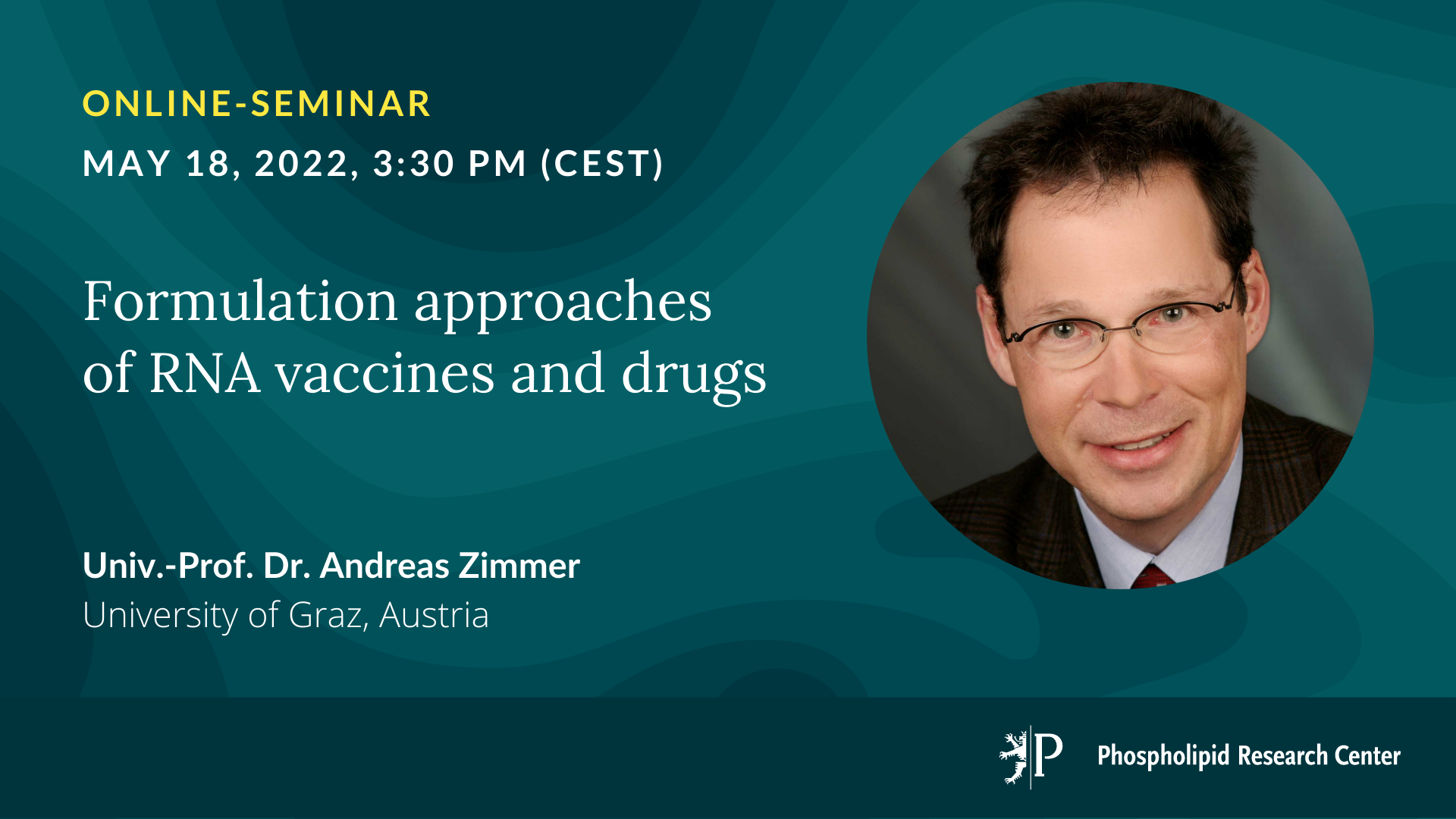Webinar May 2022 – Professor Zimmer
On Wednesday, May 18, 2022, an online seminar on "Formulation approaches of RNA vaccines and drugs" was held at 3.30 p.m. (CEST).

The speaker was Univ.-Professor Dr. Andreas Zimmer from the Univeristy of Graz, Austria.
Abstract
mRNA vaccines were introduced and approved as SARS-CoV-2 vaccines in up to 130 countries world wide. Pfizer/BioNTech: BNT162b2 (Comirnaty), the Moderna: mRNA-1273 referred to as Spikevax, and the equivalent galenic formulation Takeda: TAK-919 were the first mRNA vaccines on the market. In total, 33 vaccines were approved for human use worldwide and 10 vaccines were approved for use by WHO (Feb. 2022). These include also vaccines based on a non-replicating viral vector technology, as well as on protein subunits or the more classical approach to use inactivated viral material. In addition to these already established RNA products, next generation self-amplifying RNAs (saRNA) are in clinical trials. Nevertheless the approved vaccines came to market more or less one year after the spreading of the SARS-CoV-2 which was communicated as a great success of research and development which speeded up during the pandemic situation and, therefore, many people, but also some legal authorities were scared about the new RNA technology which was not “long-term” tested as vaccines before and which may have unknown side effects. Certainly, one aspect helped to accelerate the approval since the first RNA drug, Onpattro, came to market shortly before the SARS-CoV-2 outbreak and this drug employed the same lipid nanoparticle drug delivery platform which was used for the mRNA vaccines.
The aim of this talk will be to convince the audience that this RNA technology and galenic formulation is not that new as it was communicated to public media and to provide an update on this formulation and manufacturing approach. Indeed, most of the research which is now commercialized is based on the idea of lipofection which was published by Felgner and Ringold for the first time in 1989. Since the last 30 years this technology was constantly improved and now the lipid nanoparticles are complex nucleic acids (DNA or RNA) formulations based on cationically charged lipids and helper lipids.
In conclusion, these mRNA formulations used for vaccines and siRNA drugs before are currently the top of the evolution of this drug delivery technology and the presentation will provide an outlook on future applications such as saRNA products or in vitro tools for CAR-T cell therapy and the next generation of cancer medications.
If you need the slides of the presentation, please get in touch with us!

